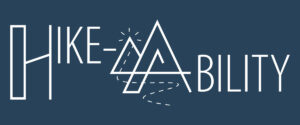Your cart is currently empty!

Better Balance: Prevent fall-related injuries on the trail
—
by

Navigating uneven terrain when hiking requires good neuromuscular (brain-muscle) coordination, control, and balance to prevent falls and fall-related injuries. We’ve all been tripped up by a sneaky tree root or rock on the trail, but the difference between staying upright versus falling depends on your neuromuscular reaction time coupled with effective muscle control.
The muscles in your core, legs, hips, and ankles need to function efficiently to establish good balance. Balance and core strength are essential components to ALL activities that you do. Furthermore, it’s important to recognize that the addition of a weighted backpack increases the demand on your muscles and makes movements and maintaining balance more challenging.
Coordination and balance tend to decline with age. But the good news is, it can be improved. It’s easy to incorporate balance training into your day-to-day and your fitness routine.
BALANCE
Balance is largely dependent on how effective the brain is at talking to your muscles.
The neuromuscular system is the pathway of signals back-and-forth between your brain, nerves, and muscles. Regular training of this system improves neuromuscular activity— the ability of the brain and nerves to communicate and quickly react.
There is a caveat— balance requires more than just good neuromuscular activity. Meaning, it’s possible that your brain effectively communicates to the nerves in your muscles to react and activate, however, if you don’t have appropriate strength in these muscles you will “lose your balance”.
Maintaining balance requires good neuromuscular communication, coordination, muscle strength, and mobility.

Balance Test
SINGLE-LEG BALANCE ASSESSMENT
Begin by standing with feet hip-width apart.
Start a timer and raise the right foot approximately 8-12 inches off the ground. Record the time at which you “lose your balance”(touching the floor with the raised leg, trunk/upper body swaying significantly and/or arms excessively moving or crossing the body).
Repeat the process on your other leg, and record your results.
- Make it your goal to reach at least 20 seconds on each leg.
- Pay attention to asymmetry from left to right, and work to restore symmetry by working the weaker side a bit more.
- As your balance improves try the test with your eyes closed, and then progress to having the stationary heel elevated.
CORE
When properly engaged, the muscles of the core support, protect, and stabilize your spine through all planes of motion, they keep you upright, and assist with balance.
RELATED ARTICLE: The Importance of Core Stability
3 Ways to Improve Balance
- Focus on core exercises that improve endurance, strength and function of the muscles that are responsible for stabilizing and protecting the spine.
NO abdominal crunches required! Learn my favorite core exercise: Dead-Bug - Strengthen the muscles that you rely on for balance.
Integrate single-leg strength and stability exercises to your fitness routine.
Add a “balance challenge” to everyday tasks (like brushing your teeth or washing dishes on one leg).
Enroll in the HIKE-ABILITY Training Program for a complete list of must-do exercises and how-to videos. - Add ankle and hip mobility exercises to your training to keep joints moving freely and efficiently through their optimal range of motion.
Learn more about Mobility Training.
Balance is as much of a necessity to hiking fitness as cardiorespiratory endurance. You’ll want better balance and quick muscle control — so you can hike safely and with more assurance whenever the trail gets bumpy, you encounter a water crossing with a log foot path or skipping stones, or when the “trail gremlins” trip you up. 😉
Kristen, CPT and creator of the HIKE-ABILITY Training Program

Disclaimer: All information, content, and material (including associated text, videos, and links) on this website is provided in good faith and is for informational and educational purposes only. It is not intended to serve as a substitute for the consultation, diagnosis, and/or medical treatment of a qualified physician or healthcare provider. All exercise has inherent risks. Before beginning any type of exercise, please consult your health care provider.




Leave a Reply